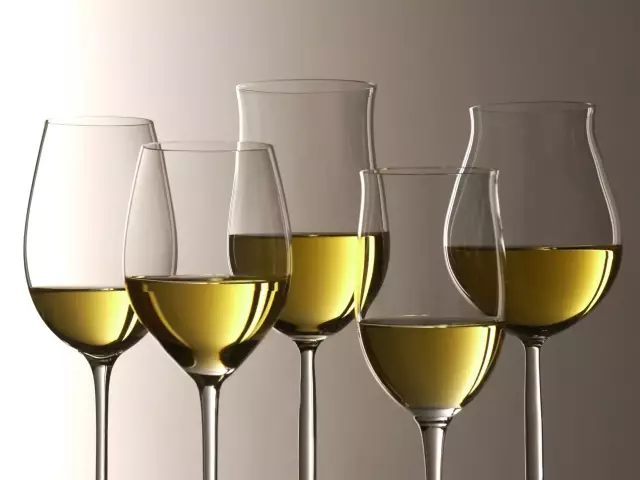Wine Tasting
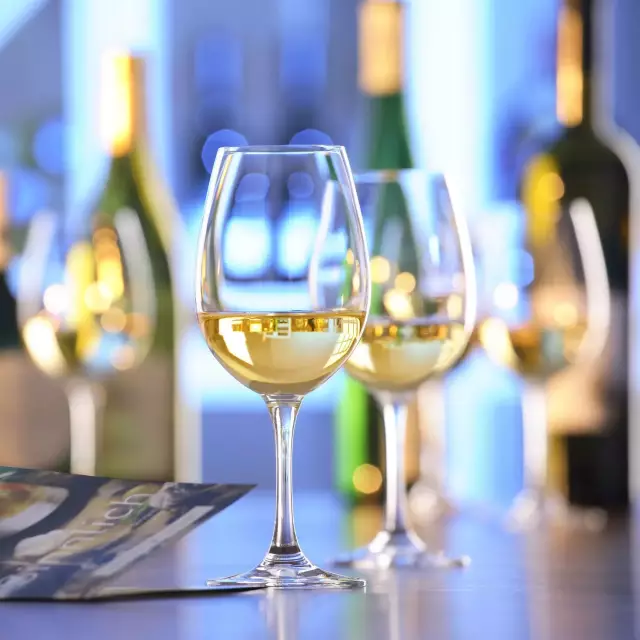
It's fun, it's easy to do, and you learn something from it, either with a group or just another friend. What do you need or need to know? Less than you think ...
Facts
-
9 - 11° C
is the recommended temperature for young, light wines
-
16 - 18° C
are perfect for ripe, full-bodied red wines
Enjoy with all your senses and have fun
The first thing to consider is the clarity and color of the wine. Both provide information about its condition and maturity. For example, the more mature a white wine is, the more golden it shimmers, right down to a rich dark amber.
It is not only the eye that anticipates enjoyment by swirling the glass. The wine also releases its aroma and bouquet into the air. Capturing this scent and translating it to words requires some practice. After all, most people are not very trained to describe their olfactory sensations in words. What helps is the comparison with familiar aromas. Does the wine conjure images of fruits like apples, berries or peaches? Does it have a hint of spring flowers or fresh green fields? Does it smell slightly of wood or something like vanilla? A wine aroma wheel can help you to express your sensory impressions whilst smelling and tasting.
The taste of a wine unfolds in different parts of the mouth. What helps the wine and the taste buds is air. This explains why some wine lovers slurp the wine or draw a little air through the wine and let the wine roll over the tongue. This is the only way to perceive all taste and aroma nuances.
Theme your wines
In order to not overwhelm the sense of taste during an extensive wine tasting, it is advisable to slowly increase: light before heavy, dry before sweet, young before old. Of course, you can also try only white or only red, only dry or only more mature wines – the choice is yours.
Which wine you put together for a sample is entirely up to you. How about a selection from a particular growing region, for example? Then you can discover a characteristic taste typical for the area.
Or you can compare wines of one grape variety, for example Riesling, from different cultivation areas. With the same vintage and the same quality level (such as Kabinett or Spätlese) you will be able to taste astonishing differences. Other ideas for a wine tasting are a quality level tasting, vintage tasting or a surprise wine tasting, where your guests bring their favorite wines.
Little effort, much delight
There is not much to prepare for a wine tasting. Of course, you need the wines and should ensure the right temperature: cool white wine in the refrigerator to 7 - 8 degrees Celsius; red wine is best offered at around 16 degrees Celsius.
If you want to be precise, you can adhere to the following recommendations:
- Young, light white wines e.g. Riesling Kabinett 9 - 11°C
- Ripe, strong white wines, e.g. Pinot Blanc late harvest 11 - 13°C
- Rosé wines, e.g. Weißherbst 9 - 13°C
- Young, light red wines, e.g. Portuguese or Trollinger 14 - 16°C
- Ripe, full-bodied red wines, e.g. Pinot Noir late harvest 16 - 18°C
- Rich and tannic red wines, e.g. from barriques 18 - 20°C
There are two important points to note about the wine glass. Firstly, the glass should have a tulip-shaped bowl for the bouquet to fully unfold - bowls for white wine are smaller than for red wines. Secondly, the glass should be clear and have a stem that you can hold so that you can judge the color without fingerprints. (see also wine glass)
For the wine tasting itself, bread rolls and fresh water are served. A bite of bread between the tasted wines neutralizes the taste. Afterwards, you can have a hearty snack and enjoy the previously tasted wines fully with food.
Enjoy!
Opening a wine bottle is an anticipation enjoyed throughout a tasting. The amount opened is up to you. A small wine tasting can involve 4 - 5 bottles. As the number increases, for example to 12 - 14 wines, the ability of the taste buds to differentiate sometimes decreases.
Uncorking should be done as gently as possible. It is best to use a corkscrew with large turns as it grips the cork without cork crumbs getting into the wine. This is particularly important with older wines when the cork has become brittle. White wines should be opened just before serving.
Rich red wines should be opened much earlier. In order to perceive the scent and aroma of the wine intensely, the wine glasses should only be filled halfway.
Tasting can be studied
As well as trade and gastronomy, wine enthusiasts are also very interested in wine seminars, therefore the DWI has developed a seminar especially tailored to the needs of private wine lovers. The new wine connoisseur seminar is a real treat for wine lovers wanting detailed knowledge, with practice and theory complementing each other in an extremely entertaining way.
What does it mean when a wine forms "chruch windows" when swirled in a glass?
The so-called church windows provide information about the viscosity and thus concentration of various ingredients of the wine. The higher the viscosity, the more it draws streaks when swirled - the church windows.
Varietals

More recipe ideas
with semi-dry wines Flädlesuppe
with semi-dry wines
- 1 Bund Schnittlauch
- 1 Liter Fleischbrühe
- 150 Gramm Weizenmehl
- 300 ml Milch
- nach Belieben Speckschwarte zum ausreiben der Pflanne
- Etwas Salz
Make a smooth, not too thick batter from the flour, milk, eggs and a pinch of salt. Heat a heavy frying pan on a high heat, rub with bacon fat, pour in a small dollop of batter, allow to spread and fry thin pancakes (flädle).
<p
<p>Leave the pancakes to cool, halve and cut into thin strips.
Place in clear, very hot meat stock and serve immediately.
<p- Trollinger (halbtrocken & feinherb)
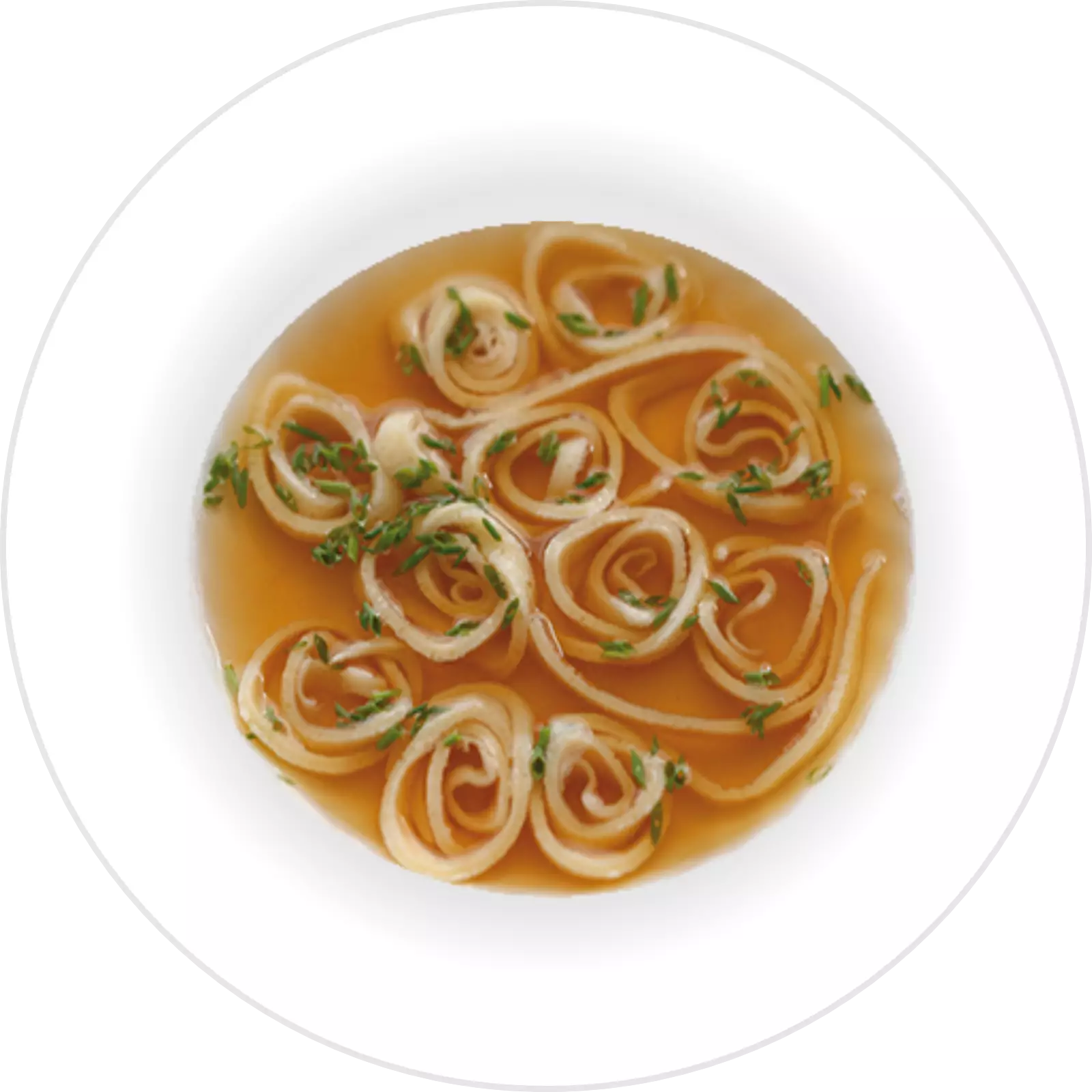
with ribbon noodles Coq au Riesling
with ribbon noodles
- 1 ganzes Huhn
- 0,4 Liter Riesling
- 0,2 Liter Sahne
- 1 kl. Glas Cognac
- 2 Stück Schalotten
- 1 Stück Knoblauchzehe
- 1 Stück Eigelb
- 1/2 Bund Petersilie
- 1 EL Mehl
- 50 Gramm Butter
- 1 EL Olivenöl
- nach Belieben Salz & Pfeffer
Carve the chicken. Heat approx. 50 g butter with 2 tbsp olive oil in a large frying pan and fry the chicken pieces until light brown (without the lid). Season lightly with salt.
Finely chop the shallots, peel and finely chop the garlic. Chop the parsley and add everything to the meat. Sauté briefly with the pan closed. Pour the cognac over the meat and light it (flambé). Deglaze with 1/3 litre of Riesling and leave to simmer for half an hour over a low heat. If necessary, add a little more wine and simmer for a further 10 minutes.
Remove the chicken pieces and keep warm for a short time. Mix 1 tbsp of flour with 1 egg yolk and the cream and whisk into the sauce. Flavour with salt and pepper. Return the chicken pieces to the pan. Serve immediately.
This goes well with tagliatelle.
Variant:Fry 150 g fresh mushrooms in 50 g butter and add.
- Riesling (trocken)
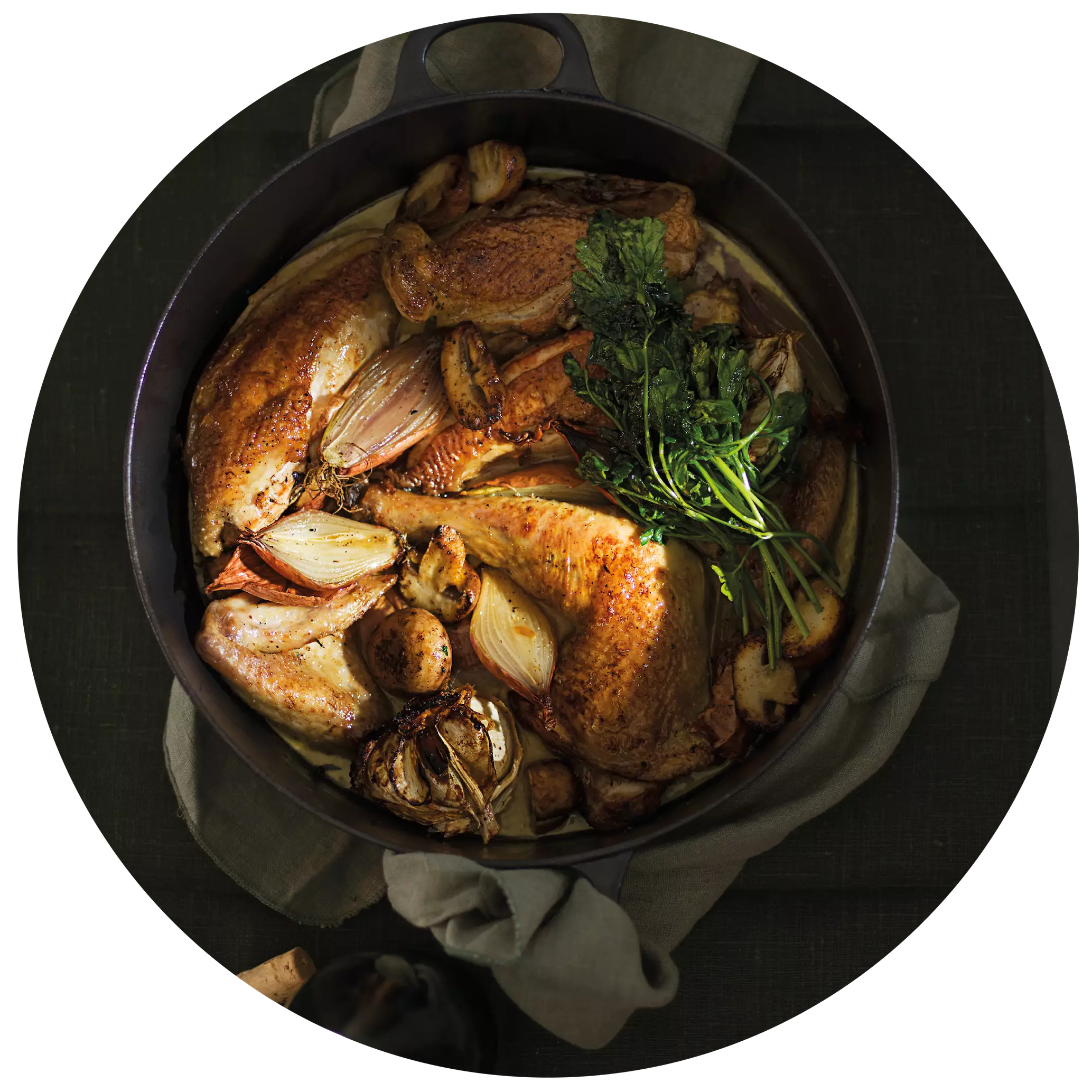
with apples and nuts Tarte flambée
with apples and nuts
- 250 Gramm Weizen- oder Dinkelmehl
- 150 Gramm Crème fraîche
- 150 Gramm körniger Frischkäse
- 2 säuerliche Äpfel
- 1 - 2 Zwiebeln
- 30 Gramm Walnüsse oder Haselnüsse
- 15 Gramm Hefe
- 1 EL Zucker
- 2 EL Olivenöl
- 2 Zweige frischer Thymian
- Nach Bedarf Salz & Pfeffer
- 200 ml warmes Wasser
For the yeast dough, sieve the flour into a bowl and make a well in it. Dissolve the yeast in a little warm water and pour into the well. Cover the bowl with a cloth and leave to rise for 10 minutes. Then knead the pre-dough with the dough hook of a hand mixer and gradually work in the warm water, the oil and a teaspoon of salt. Leave the kneaded dough to rise until it has doubled in volume (approx. half an hour, in a warm place).
Cut the onions into wedges. Roughly chop the nuts. Core the apples, cut into slices (the thicker the apple slices, the juicier the tarte flambée) and sprinkle with the sugar.
<p
<p>After resting, divide the dough and roll out each half on a baking tray lined with baking paper. Preheat the oven to 220 °C (top and bottom heat)
Spread the crème fraîche evenly over the tarte flambée and top with the apple slices and onion wedges. Spread the fresh cheese on top and sprinkle with the walnuts. Sprinkle with a little salt and pepper.
Bake on the lowest shelf for 12-15 minutes and sprinkle with the fresh thyme before serving.
- Riesling (halbtrocken & feinherb)
- Riesling (lieblich)
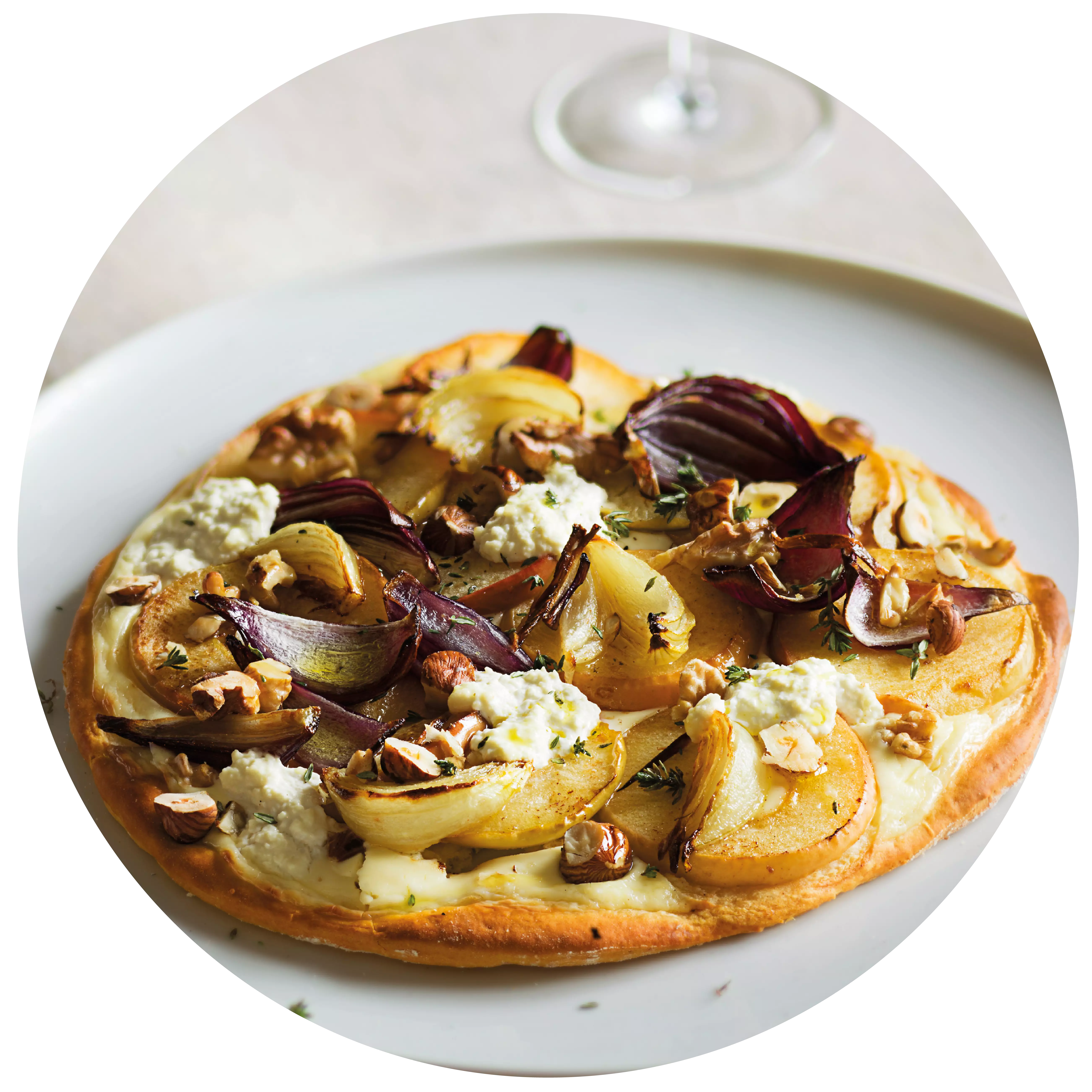
a Christmassy dessert Plum roaster with cinnamon ice cream
a Christmassy dessert
- 1 kg Zwetschgen (frisch oder TK)
- 100 Gramm Zucker
- 0.5 TL gemahlener Zimt
- Eine Prise Nelkenpulver
- 50 ml Pflaumenschnaps
- 50 Gramm dunkler Rohrzucker
- 2 EL alter Balsamicoessig
- 200 Gramm Zucker
- 4 Eigelb
- 500 ml Sahne
Plum rings:
Wash, deseed and quarter the plums. Spread the sugar evenly in a non-stick pan and melt slowly over a medium heat. Increase the temperature and immediately add the fruit, schnapps and spices. Stir until the mixture caramelises.
Stir in the muscovado sugar and balsamic vinegar, spread onto a cold plate after approx. 3 minutes.
<p
<p>Cinnamon ice cream:
Combine the sugar and egg yolks and stir the two ingredients over a bain-marie until frothy.
Whip the cream, then carefully mix both mixtures and add three teaspoons of cinnamon. Carefully mix the cinnamon into the mixture again.
Pour the finished mixture into any (cake) tin or small dish, cover with aluminium foil and place in the freezer for at least three hours.
Place the plums on four deep plates or small bowls, cut off 2 – 3 ice lollies each and place on top, serve immediately.
- Gewürztraminer (trocken)
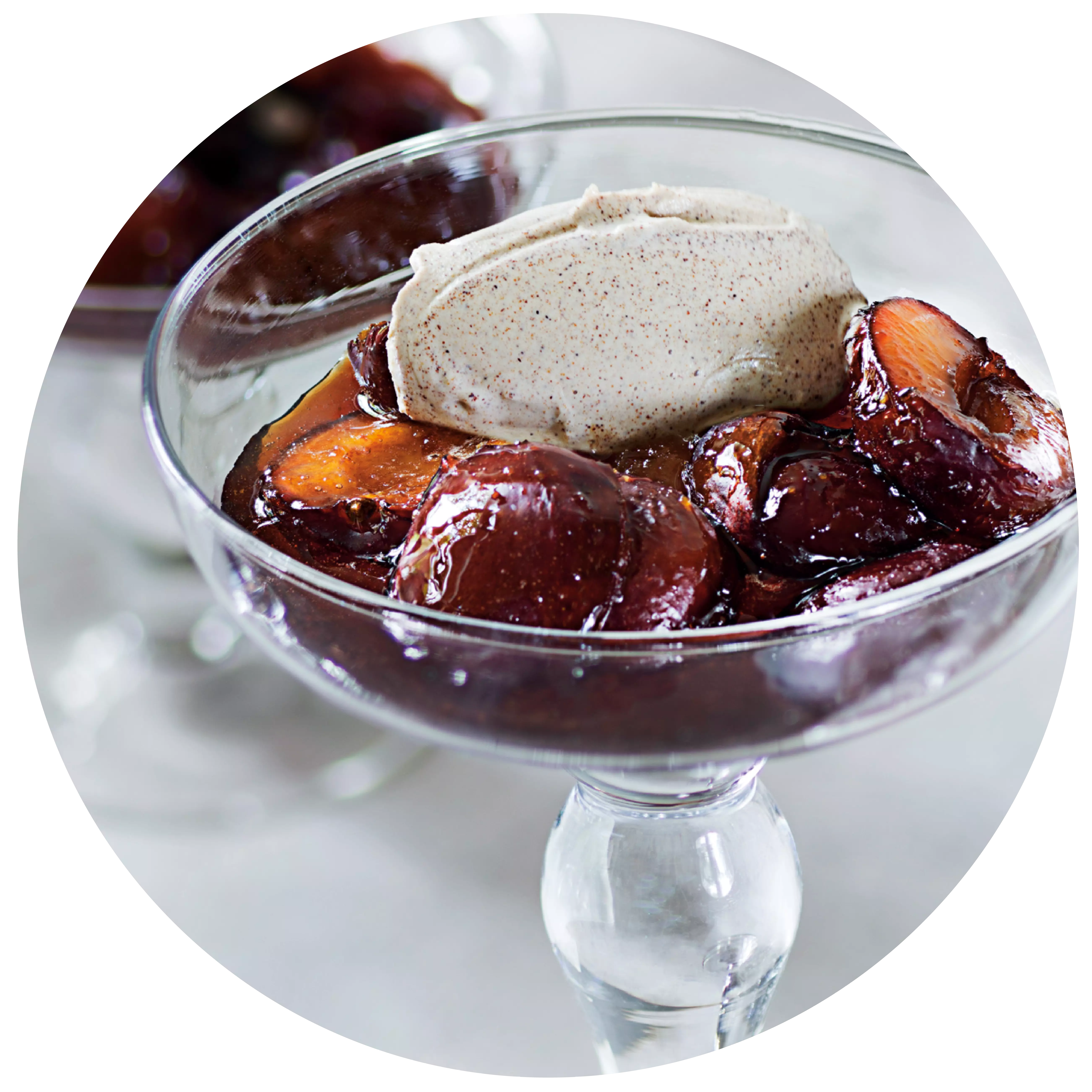
Events
-
Show
winetasting in our winery - cheese & wine
Mainz-Hechtsheim



